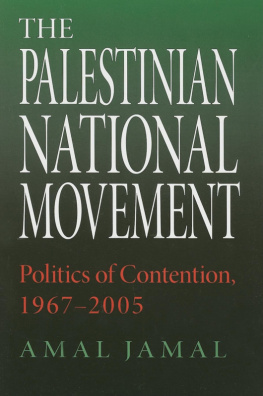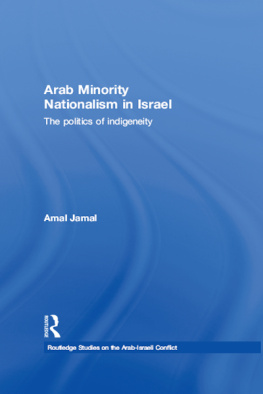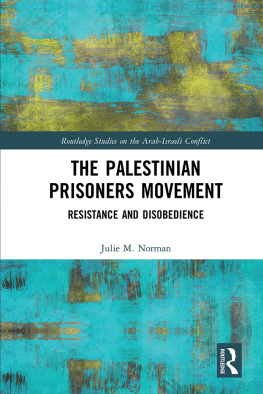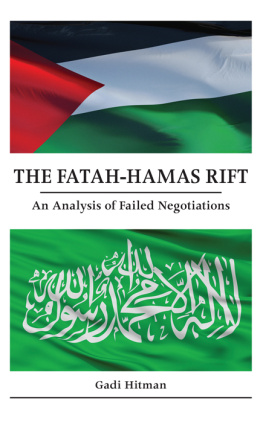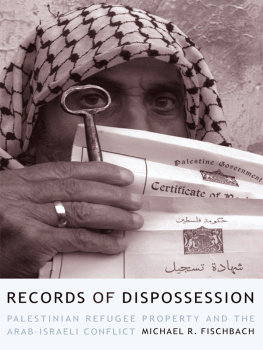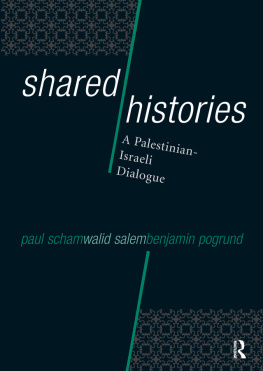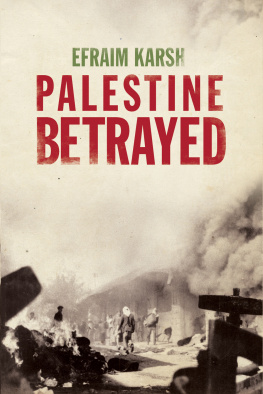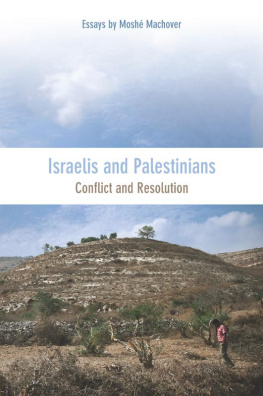THE PALESTINIAN NATIONAL REVIVAL
PERSPECTIVES ON ISRAEL STUDIES
S. Ilan Troen, Natan Aridan, Donna Divine, David Ellenson, and Arieh Saposnik, editors
Sponsored by the Ben-Gurion Research Institute for the Study of Israel and Zionism of the Ben-Gurion University of the Negev and the Schusterman Center for Israel Studies of Brandeis University
This book is a publication of
Indiana University Press
Office of Scholarly Publishing
Herman B Wells Library 350
1320 East 10th Street
Bloomington, Indiana 47405 USA
iupress.indiana.edu
2018 by Moshe Shemesh
All rights reserved
No part of this book may be reproduced or utilized in any form or by any means, electronic or mechanical, including photocopying and recording, or by any information storage and retrieval system, without permission in writing from the publisher. The paper used in this publication meets the minimum requirements of the American National Standard for Information SciencesPermanence of Paper for Printed Library Materials, ANSI Z39.48-1992.
Manufactured in the United States of America
Cataloging information is available from the Library of Congress.
ISBN 978-0-253-03659-9 (cloth)
ISBN 978-0-253-03660-5 (ebook)
1 2 3 4 5 23 22 21 20 19 18
To my beloved family:
Rachel, Yahel, and Yasaf; Oren, Shirley, and Carmel,
my first granddaughter (May 15, 2018)
Contents
I WOULD LIKE TO thank the Ben-Gurion Institute for the Study of Israel and Zionism at Ben-Gurion University of the Negev, where I am a senior researcher, for its collegial atmosphere, and thank the directors for their support, especially Paula Kabalo, who expedited the completion of my research.
This book constitutes the second part of my research trilogy surveying and documenting the history of the Arab-Israeli conflict and the chronicles of the new Palestinian national movement between the years 1949 and 1974. The research began with my masters thesis, which I completed under the supervision of the late historian Jacob Talmon at the Hebrew University of Jerusalem, The Palestinian National Re-Awakening, 19641974: The Background, Components, and Achievements of Its Revival.
I am grateful to the late Benjamin Pinkus, who was my colleague at Ben-Gurion Institute, for reading the first draft of this book and providing helpful comments. The books third part was written with his warm recommendation. Special thanks to Avi Shlaim at Oxford University for his valuable comments. I am thankful to Israel Gershoni and Haggai Erlich at Tel Aviv University for their constructive remarks; to Yezid Sayigh who provided me with original sources regarding the Fatah organization; and to Moshe Efrat, who provided me with material from his research on Palestinian refugees. Also to Natan Aridan for his valuable editorial remarks.
I am indebted to Dee Mortensen, editorial director at Indiana University Press and Ilan Troen, editor, Indiana University Press Series Perspectives on Israel Studies for their invaluable support, encouragement, and suggestions in expediting publication of this book.
My deep thanks to the staff of the unit within the Israel Defense Forces Intelligence Branch known during the period of the research as Intelligence 5 and later as Hatzav, for the wealth of material that was very valuable in researching the 1950s and 1960s, during which they translated Arab radio broadcasts and Arab press items; to the library staff of the Truman Institute at the Hebrew University of Jerusalem; and to staff members of the Israel State Archives and of the Israel Defense Forces Archives for their assistance and guidance in locating materials. Thanks to the staff of the Ben-Gurion Archives in Sede Boker, to the head of archives, Hana Pinshow, and to Leana Feldman for their dedicated service. Thanks to the Ben-Gurion Research Institute library staff, headed by Lily Adar, and to Yefim Magarill in addition Yosef Litus for his computerization assistance. Thanks to Hadas Blum for preparing the index.
I am indebted to the Israel Academy of Sciences and Humanities of the Israel Science Foundation, which helped support research of the second part of this book.
Last but not least, my gratitude to Merav Datan for her dedicated, professional translation and editing work.
T HIS BOOK CONTRIBUTES to a deeper understanding of the Palestinian national movement in the twentieth century, especially the roots of the national revival in the 1950s and the emergence of the Palestine Liberation Organization (PLO) in the 1960s. It addresses the Palestinian leadership crisis of those years, with special emphasis on the Palestinian position vis--vis the Arab-Israeli conflict.
The four parts of this book constitute a single unit based on a well-defined chronological framework. They are mutually linked, with later developments shedding light on earlier ones.
This volume makes a scholarly contribution to the literature by
1. Identifying the 1950s as the formative years of the new Palestinian national movement as it emerged in the aftermath of the 1948 Arab-Israeli War. It begins with a discussion of the Palestinian leadership crisis from the 1930s through the 1950s. It offers a new perspective on Palestinian society and its leadership and on the dilemmas, difficulties, and crises they confronted. The leadership of al-Haj Amin al-Husayni (the mufti) and his successor, Ahmad al-Shuqayri, are examined in the context of contemporary regional and international events.
2. Aiming to present an objective, balanced, and multidimensional approach that distinguishes between individual leadership and the development of the Palestinian national movement before and after 1948. It stresses the close correlation between the Palestinian leadership crisis, or rather lack of leadership, and the Palestinian national reawakening and revival during the 1950s. It attempts to resolve the apparent contradiction between the dominant narrative of Palestinian historians, which places emphasis on the leadership crisis and the leaderships failure to achieve the objectives of the Palestinian national movement, and the conclusion that emerges from this analysis, according to which the Palestinian national reawakening actually took place during the 1950s. The reawakening was characterized by social solidarity, resilience, survival, and determination. Practically out of nothing, it generated a national revival, which in turn led to many achievements. I examine the parts played by the mufti and Shuqayri in the national revival and conclude that, despite their failures, they were not nonentities as presented in most historical studies of the period. This book discusses the lack of Palestinian leadership with authority in the lead-up to the 1948 Arab-Israeli War and during the course of this war, the lack of a leadership recognized by Arab states and the international community as the legitimate representative of the Palestinian people. Without a deep understanding of the Palestinian leadership crisis and its impact on the Palestinian cause, any analysis of the policy of King Abdulla of Jordan regarding the Palestinian issue will be incomplete. So too is any analysis of Israels policy on this issue in the aftermath of the 1948 War.
3. Addressing the question: Why were decisions relating to the Palestinian people and the Palestinian territories during the critical years before, during, and after the 1948 War taken by Arab leaders rather than by the Palestinian leadership headed by the mufti? This phenomenon cannot be understood without reviewing the Palestinian leadership from the early 1930s. The leadership was in a state of perpetual crisis, even though to all appearances the Husaynis leadership, with the mufti as its head, seemed stable. The discussion concludes that the lack of an authoritative, recognized Palestinian leadership actually made it easier for Israel to decide on the Jordanian optionto conduct negotiations with Jordan over the future of the Palestinian territories under its control and to reach an agreement by which the West Bank would be part of the Hashemite Kingdom. Thus, the lack of a Palestinian option enabled King Abdulla to realize his ambition of annexing the West Bank to his kingdom with Israeli acquiescence. Under these circumstances, Egypt had no alternative but to maintain control over the Gaza Strip as a deposita pledge of safekeeping.


